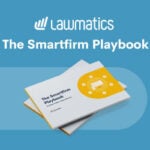3 Takeaways From LITFINCON: The Sequel
As the litigation funding space continues to grow, we can only hope that the collaborative nature of the industry continues alongside.

Back in late January, I teased on these pages the agenda for the second installment of LITFINCON, which once again embraced the challenge of putting on a world-class litigation finance conference in Houston, Texas. As with last year, I am pleased to report that this year’s LITFINCON reached “Empire Strikes Back”-levels of sequel prowess, avoiding the ignominy of a “Zoolander 2” comparison. I was not surprised, of course, considering the fact that many of the same ingredients that made the original LITFINCON a raving success remained in place — from the posh venue (where this year’s NBA denizens du jour were the Memphis Grizzlies,) to the unique conference diversions (a trip to the Houston Rodeo and another lunchtime live stand-up performance by a ranking comic) to the varied and interesting panels that I discussed in my January event preview column. Add in that 2022 was a banner year in the litigation finance space for many of the attendees — both in terms of performance as well as with respect to deepening relationships with each other — and I can say without reservation that LITFINCON has earned its spot on the litigation finance calendar as a conference best not missed. That endorsement is doubly true for IP litigators whose practices are impacted by litigation funding, as once again the importance of the patent litigation ecosystem to the health of the burgeoning litigation funding industry in America was reinforced by various speakers.
Highlights from the conference were plentiful, starting with an opening tribute to perhaps the unsung heroes whose work underpins many of the opportunities that litigation finance creates for other lawyers and clients, namely, trial lawyers. There is no doubt that much of the benefit of litigation funding for firms and their clients revolves around the ability to give under-resourced plaintiffs the staying power to take their cases to trial. But in order for that leveling of the playing field to have maximum impact, the uniquely skilled segment of the bar that is today’s trial lawyers must continue to hone their craft while delivering results. Not an easy ask in this age of the disappearing jury trial, particularly in the patent space, where the prevalence of parallel litigation in the PTAB coupled with numerous districts all too keen to dispose of cases on summary judgment or even motions to dismiss make the road to trial an often impassable one for many patent owners. Thankfully, however, Texas continues to lead the way in espousing a vocalized respect for the jury trial — and it is thus no surprise that the contributions of Houston-based trial lawyers operating in the self-styled “Trial Lawyer Capital of the World” were celebrated at LITFINCON.

The Smartfirm Playbook - Thriving In Today’s Legal Landscape
For the first takeaway from this year’s conference, I would stick with the Texas theme and point to the blockbuster judicial panel that was a highlight of LITFINCON for many. This year’s panel featured a repeat appearance from last year by the always erudite and thoughtful Hon. Charles R. Eskridge III of the Southern District of Texas. A retired SDTX judge and current mediator, Nancy Atlas, was also on the panel, along with a sitting Texas state court judge, the Hon. Mike Engelhart. Each had great insight to offer on topics such as disclosure of litigation funding arrangements during discovery, as well as the fact that not as many disputes around funding disclosure make it to the bench as one might imagine. For patent litigators, however, it was the chance to hear from the WDTX’s Hon. Alan Albright, who saw over 800 patent cases resolved on his docket last year, that was the highlight of the judicial panel. And Albright did not hold back, candidly sharing his views on his approach to litigation funding and disclosure, as well as the importance of his gatekeeper role in terms of stewarding patent cases in his court toward trial — but with a keen eye to ensuring that damages presentations to the jury are rooted in a legally acceptable methodology, as has been previously covered on these pages. As someone who has always found value in observations from the bench, I found this year’s judicial panel at LITFINCON did not disappoint in the least.
For the next takeaway, I would like to highlight the collegiality among panelists throughout LITFINCON. Not only because that collegiality — even when there were differences of opinion — helped enhance the quality of the presentations, but also because I found it emblematic of one of the key developments in the litigation funding space between last year’s conference and this one. In last year’s recap column, I stressed that “relationship building remains a core value and essential undertaking” for those operating in the litigation funding space and that observation remains as true as ever. Many of the panelists had prior working relationships with their co-panelists, which helped to engender a real cooperative spirit that pervaded LITFINCON, just like last year. Yes, many of the attendees worked for organizations that could fairly be considered competitors of similar entities in attendance, but that did little to dull the shining vitality of spirit that colored many of the LITFINCON discussions, whether onstage or off. As the litigation funding space continues to grow, I can only hope that the collaborative nature of the industry continues alongside — and it is well-planned and executed conferences like LITFINCON that can play a big role in ensuring that remains true over time.
Lastly, it was heartening to see how much creative thinking continues to pervade the burgeoning litigation finance sector. From the academics thinking through parallels for the industry’s continued development as compared to other areas of legal innovation, to the insurance providers and brokers working to bring innovative new insurance products to the market, to the law firms and litigation funders continuing to explore better ways to align interest in funding arrangements, there is no doubt that the sector continues to reward a willingness to adapt and experiment. Put another way, LITFINCON’s second act proved to any interested observer that the litigation funding space is in no danger of becoming a stale segment of the broader legal landscape. And as litigation finance becomes an ever-more important component of modern patent litigation, it behooves patent lawyers of all stripes to learn as much as they can about the possibilities and pitfalls of litigation funding. Not only will it help them service their clients better, but it may also give them a good reason to attend next year’s LITFINCON.
Please feel free to send comments or questions to me at gkroub@kskiplaw.com or via Twitter: @gkroub. Any topic suggestions or thoughts are most welcome.
Sponsored

LawPay Pro Offers Upgraded Time And Billing Essentials

How Generative AI Is Disrupting Law Firm Billing Practices

The Smartfirm Playbook - Thriving In Today’s Legal Landscape

InterAction+ Brings Power Of CRM Software To Law Firms Of All Sizes
Gaston Kroub lives in Brooklyn and is a founding partner of Kroub, Silbersher & Kolmykov PLLC, an intellectual property litigation boutique, and Markman Advisors LLC, a leading consultancy on patent issues for the investment community. Gaston’s practice focuses on intellectual property litigation and related counseling, with a strong focus on patent matters. You can reach him at gkroub@kskiplaw.com or follow him on Twitter: @gkroub.
Sponsored

How to Achieve Quicker, More Valuable Case Settlements with Minimal Effort: A Guide for Personal Injury Lawyers








